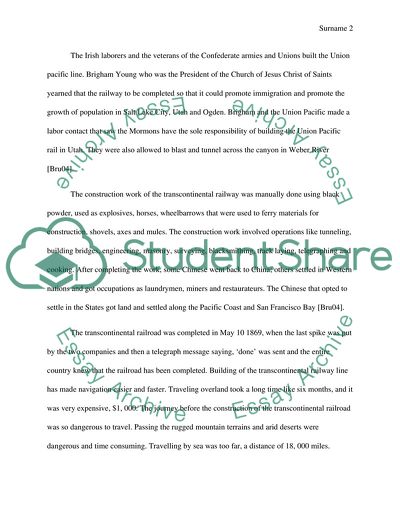Cite this document
(“The Obstacles and Hardships while Building the Transcontinental Term Paper”, n.d.)
The Obstacles and Hardships while Building the Transcontinental Term Paper. Retrieved from https://studentshare.org/history/1596061-the-obstacles-and-hardships-while-building-the-transcontinental-railroad
The Obstacles and Hardships while Building the Transcontinental Term Paper. Retrieved from https://studentshare.org/history/1596061-the-obstacles-and-hardships-while-building-the-transcontinental-railroad
(The Obstacles and Hardships While Building the Transcontinental Term Paper)
The Obstacles and Hardships While Building the Transcontinental Term Paper. https://studentshare.org/history/1596061-the-obstacles-and-hardships-while-building-the-transcontinental-railroad.
The Obstacles and Hardships While Building the Transcontinental Term Paper. https://studentshare.org/history/1596061-the-obstacles-and-hardships-while-building-the-transcontinental-railroad.
“The Obstacles and Hardships While Building the Transcontinental Term Paper”, n.d. https://studentshare.org/history/1596061-the-obstacles-and-hardships-while-building-the-transcontinental-railroad.


